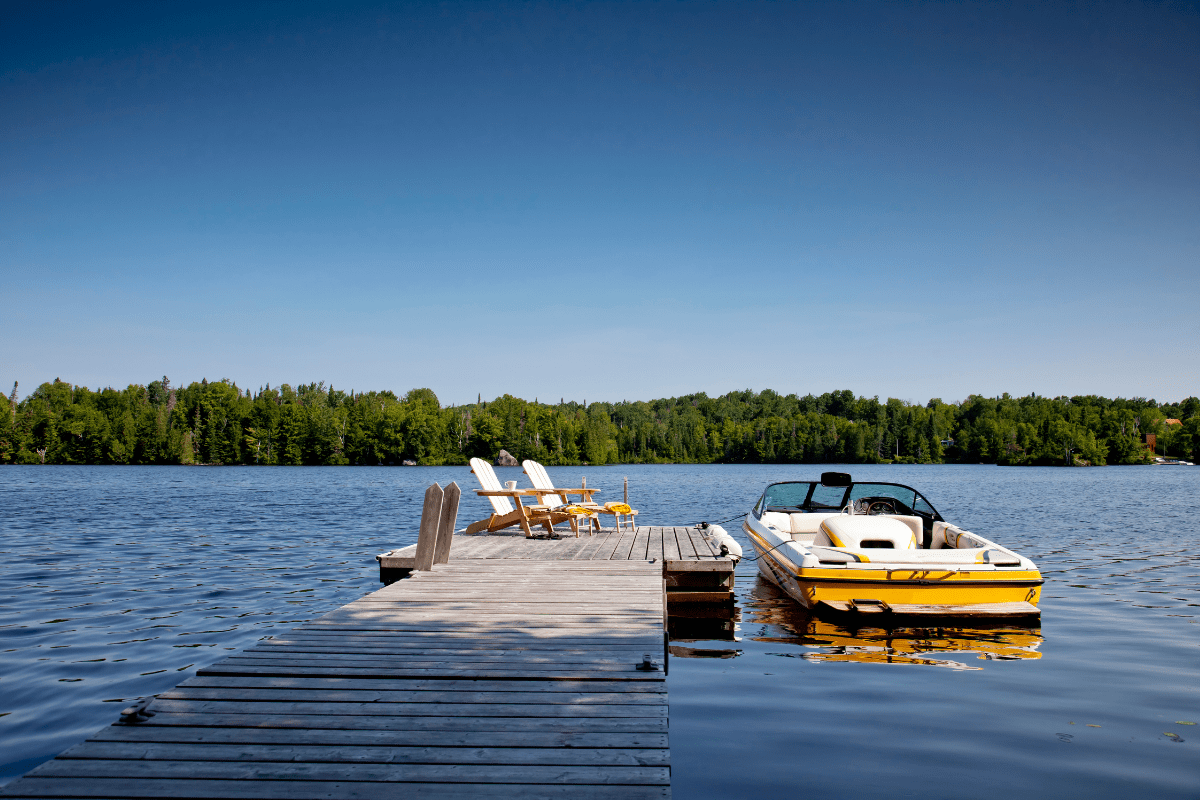Oklahoma might not be the first place that springs to mind when you're thinking about family-friendly states, but maybe that's because you haven't checked housing prices lately. While everyone else is fighting over $600,000 starter homes, Oklahoma families are buying actual houses with yards… and still having money left over for things like food and college savings.
Why Oklahoma is suddenly on every family's radar
The numbers tell a story that surprised even us. Last year, 107,679 people moved to Oklahoma, making it the 10th most popular state for domestic migration. And before you ask, no, they're not all coming for the tornadoes.
Here's what's actually drawing families to the Sooner State:
- Housing costs 42.4% below the national median
- Job openings rate of 5.4% (versus 4.4% nationally)
- Universal school choice with $5,000-$7,500 per child for private school
- Actual seasons (though summer might try to kill you)
- Communities where neighbors still know each other's names
The catch? Oklahoma ranks 46th in child well-being, which sounds terrible until you realize that's mostly about the state overall, not specific cities. Some Oklahoma communities are absolutely crushing it for families, while others… well, let's just say you'll want to keep reading before you pack the moving truck.
Jenks: The suburb that makes other suburbs jealous
If Oklahoma suburbs had a popularity contest, Jenks would win by a landslide. This Tulsa suburb has somehow figured out the secret sauce for family life, starting with the fact that 48% of households have kids. That's not a typo. Nearly half the town is dealing with someone's science fair project right now.
What makes Jenks special
The median household income of $101,767 certainly doesn't hurt, but it's the safety stats that really stand out. Jenks ranks #32 nationally for safety, with your chances of experiencing violent crime at just 1 in 485. Your biggest danger is probably aggressive PTA fundraising.
The schools are what seal the deal for most families:
- Jenks Public Schools: A+ Niche rating
- 12,632 students across 8 schools
- 41% AP participation rate
- $19 million bond approved for upgrades
- Strong arts and athletics programs
The reality check on costs
Here's where Jenks gets less friendly. Single-family homes average $310,700, and if you want a townhome, you're looking at $345,000. Property taxes sit at 1.01%, and apartment rentals average $1,340 monthly. Still cheaper than California, but this isn't exactly "dirt cheap Oklahoma" territory.
Edmond: Where overachievers go to raise overachievers
Edmond doesn't mess around when it comes to education. Home to Oklahoma's #1 rated school district, this Oklahoma City suburb attracts families who consider "average" a four-letter word.
The numbers back up the hype. While the state averages 27% English proficiency, Edmond students hit 51-65%. Math proficiency ranges from 32-55%, compared to the state's 25%. These aren't just good scores for Oklahoma… these are legitimately impressive numbers that would make plenty of "better" states blush.
The University of Central Oklahoma advantage
Living in Edmond comes with a secret weapon if you work at UCO. Employee children get 100% undergraduate tuition waivers. That's right, free college. Suddenly that $334,356 median home price doesn't sting quite as much.
The city maintains a crime rate of 24.36 per 1,000 residents, well below the national average of 33.37. With unemployment at just 3.4% and median household incomes between $94,678 and $102,032, Edmond families aren't just safe… they're thriving.
The middle ground: Great cities that won't break the bank
Not everyone can swing Jenks or Edmond prices, and that's where Oklahoma's mid-size cities shine. These places offer the sweet spot of good schools, reasonable safety, and housing prices that won't require selling a kidney.
Norman: College town perks without college town prices
Norman leverages its University of Oklahoma connection brilliantly. The median home price of $260,000 gets you into the 8th-ranked school district in the state, serving 15,786 students.
School performance beats state averages handily, with English proficiency at 38-57% and math at 22-47%. Plus, your kids grow up with easy access to college football, which in Oklahoma is basically a religious experience.
Broken Arrow: Big city amenities, small town feel
As Oklahoma's fourth-largest city with 122,756 residents, Broken Arrow offers something increasingly rare: suburban safety in a legitimately sized city. Ranking #68 nationally for safety with a 4.1-star Niche rating, it's proof that size doesn't have to mean danger.
Home values range from $187,000 to $310,700 depending on what you're after, and rentals run $1,119 to $2,040 monthly. The schools emphasize strong performing arts programs, because apparently, Oklahoma kids are required by law to be good at either football or theater.
Stillwater: Where Oklahoma State University pays for your kids' college
Here's a deal that should be illegal but somehow isn't. Stillwater's school district ranks #4 statewide with 43% math proficiency and 41% reading proficiency. But the real kicker? OSU employees get complete tuition waivers for their kids.
The cost of living sits 10% below national average with median home prices at $232,777. It's like someone designed a cheat code for middle-class family life.
The small town surprise: Mustang
Sometimes smaller really is better. Mustang, with just 20,518 residents, puts many larger cities to shame. The median household income of $87,356 supports impressive school performance:
- English proficiency: 50-68%
- Math proficiency: 47-59%
- Strong focus on student mental health
- Small class sizes and community involvement
The education landscape: It's complicated
Oklahoma's education system is like a mullet: business in the suburbs, party in the urban cores (and not the good kind of party). The disparities are stark enough to make your head spin.
The good, the bad, and the "are you kidding me?"
Deer Creek Schools boasts a 96% graduation rate, the highest in the state. Meanwhile, Oklahoma City Public Schools struggles with 20-28% English proficiency and 11-19% math proficiency. It's like they're not even playing the same sport.
The new universal school choice program offers families $5,000-$7,500 per child for private school tuition, with $250 million allocated for 2025-26. Of course, private schools immediately raised tuition to an average of $11,258 annually, because capitalism gonna capitalism.
Charter schools offer another option, with 78 schools statewide. The brick-and-mortar charters show 35% proficiency rates and 83% outperform their local districts, while virtual charters lag at 23% proficiency. Choose wisely.
Safety: Location, location, location
The safety differences between Oklahoma cities could give you whiplash. Urban centers struggle with crime rates that'll make you clutch your pearls, while some suburbs are so safe they make Mayberry look dangerous.
The numbers that matter
Oklahoma City posts 35.84 crimes per 1,000 residents, giving you a 1 in 28 chance of being a victim. Tulsa's even worse at 48 per 1,000, ranking among America's 100 most dangerous cities. Not exactly selling points for the tourism board.
But venture into the suburbs and it's a different world:
- Owasso: 18 crimes per 1,000 residents
- Violent crime chance: 1 in 858
- Bixby: A+ safety grade
- Fort Gibson: Population 3,805, crime basically non-existent
The housing market: Still (relatively) sane
In a world gone mad with housing prices, Oklahoma remains an oasis of affordability. The statewide median of $259,000 sits 42.4% below the national median, with inventory up 13.8% year-over-year to 21,615 homes.
Market breakdown by metro
Oklahoma City homes average $275,000 and spend about 32 days on market. Tulsa ranges from $193,658 to $249,000 depending on which data you trust, with a competitiveness score of 72/100.
Property taxes vary significantly. Tulsa County's 1.31% exceeds the national average of 0.99%, while Bixby residents face the highest burden at 1.44%, translating to $3,171 median annual bills. Still beats California, where property taxes are lower but the houses cost more than small countries.
Rental markets remain reasonable with Oklahoma City 3-bedrooms averaging $1,460 monthly. Broken Arrow offers options from $1,119 to $2,040, while smaller Sapulpa hovers around $1,390.
Healthcare and family fun: The good news
When it comes to pediatric care, Oklahoma surprises again. Saint Francis Children's Hospital in Tulsa operates as a St. Jude Affiliate Clinic… one of only eight nationwide. With 95 pediatricians and 45 subspecialists, plus a 100,000 square foot ambulatory care center, Tulsa families access world-class pediatric care without world-class prices.
Parks and recreation that actually rock
Oklahoma City operates 17 recreation centers and 135 parks spanning 6,500 acres. The crown jewel? Scissortail Park's 35 acres of gardens, playgrounds, and interactive fountains, open 5 AM to 11 PM daily.
Tulsa counters with the internationally acclaimed Gathering Place riverfront park, plus $144.8 million in Arkansas River improvements and a new $18.6 million BMX USA National Headquarters. Because apparently, Oklahoma kids need options beyond football.
The economic reality: Jobs and growth
The economic picture looks surprisingly rosy. Oklahoma's 5.4% job openings rate beats the national 4.4%, with only 0.6 unemployed persons per opening versus 1.0 nationally. Labor force participation at 63.2% exceeds the national 62.6%.
Oklahoma City metro added 17,000 jobs in 2024, a 2.4% growth rate. Education and health services grew 6%, while leisure/hospitality expanded 4.8%. With 71 companies announcing expansions promising 6,500+ jobs and $7.8 billion in investment, the future looks bright for suburban communities where employees typically live.
The challenges: Let's be real
Before you load up the U-Haul, let's talk about the elephant in the room… or rather, the tornado in the room. Oklahoma recorded 152 tornadoes in 2024, including November EF-3 storms that damaged hundreds of homes. Most cities lack public shelters, so you'll want to budget for a storm shelter installation.
The child welfare statistics paint a sobering picture too. With 21% of children in poverty and 200,000 in food-insecure households, Oklahoma's 46th ranking in child well-being reflects real systemic challenges. The state ranks 49th in education according to Kids Count 2024, suggesting that those suburban success stories are swimming against a strong current.
Who's actually moving here (and why)
The migration data reveals some interesting patterns. Oklahoma has gained 49,000 residents from western states since 2020, including 12,700 from California. These aren't retirees… 60% are working-age between 25-54, with good credit scores and employment.
Families make up a significant portion, with Oklahoma gaining 8,000 net families in 2021-2022. They're drawn by more than just economics. The conservative policy environment, expanded school choice, and yes, the fact that things stayed open during COVID all play a role.
The state's investing in growth too, with $36 million funding 43 connectivity projects including safe school routes. Though fair warning: maintenance funding needs to double or triple to match peer cities' standards, so those smooth new roads might not stay that way.
The bottom line for families
Oklahoma offers a fascinating paradox for families. Choose the right city, and you'll find excellent schools, safe neighborhoods, affordable housing, and genuine community at prices that make coastal refugees weep with joy. Pick the wrong spot, and you'll understand why the state ranks so poorly overall.
The winners are clear: Jenks for those who can afford excellence, Edmond for education obsessives, Norman and Broken Arrow for balanced family life, Stillwater for the university perks, and Mustang for small-town charm with big-time performance.
The secret seems to be this: Oklahoma's suburbs and smaller cities have figured out how to create family-friendly communities despite the state's challenges. They're proof that with the right priorities, good schools, and engaged communities, you can build something special even when the state government seems determined to prove otherwise.
Just remember to budget for that storm shelter. The tornadoes aren't kidding around.





